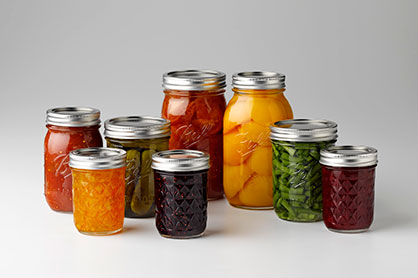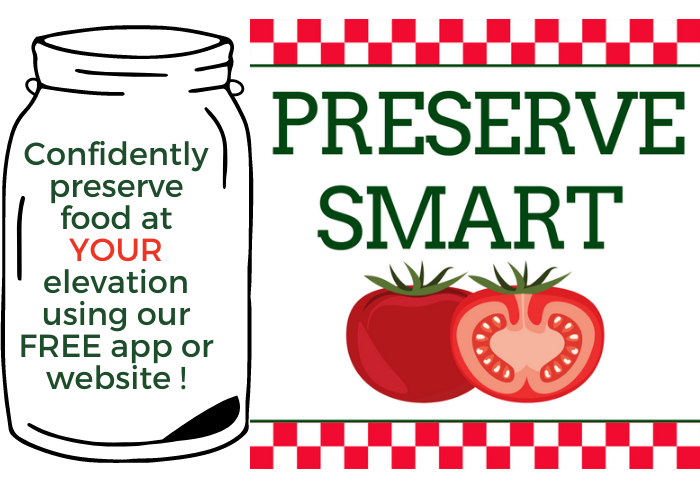Among the shifts in home life brought about by the COVID-19 pandemic is a significant surge in home canning. This is not surprising, given the gardening boom, more time spent at home, and the economic downturn. Unfortunately, this has created some shortages that are not only frustrating for home preservers but can create serious safety risks.

Supply Shortage
Most notably, there is a shortage of canning lids. If you are not familiar with the home canning process, unlike commercially processed canned goods, home canning relies on a two-piece lid system. The ‘rings’ that screw on jars can be reused, but the flat round lids must be new because forming a proper seal depends on the thin layer of sealant on the lid. Lids cannot be reused because the exposure to the high heat and pressure from processing causes changes to the sealant. And additionally, over time the sealant can become less pliable so lids should be used within five years of manufacture. After that time, the strength of the seal may be compromised.
In some areas, vinegar has also been difficult to find. Any vinegar used for canning should be at least five percent acetic acid. If a specific type of vinegar is not given in a recipe, white or cider vinegar may be used.
Equipment Shortage
There is also a shortage of pressure canners this year so some canning equipment is being used for the first time in several years and in some cases being used by a someone canning for the first time. For boiling-water canning of acidic foods, like salsa or pickles, any large pot can be used as long as you have a rack that fits the bottom. But for foods that are low in acid, like green beans or carrots, a pressure canner must be used. This is required because Clostridium botulium bacteria are able to form spores that can withstand very high temperatures, so the food in jars must reach 240°F in order to inactivate the spores. At low elevations, boiling water only reaches 212°F and in Colorado, it boils at even lower temperatures, so pressure is needed to achieve a sufficiently high processing temperature.
- This is a critical point because home-canned vegetables are the most common cause of botulism outbreaks in the U.S. and the use of acid and heat are our best tools for ensuring harmful pathogens are destroyed.
To ensure pressure canners will work safely and properly, the lid of the canner and the pressure gauge should be inspected and tested yearly. Most Extension offices across Colorado (and the U.S.) provide canner lid inspection and testing services. Contact your local Extension office for more information.
Lack of Experience
Home food preservation is an extremely useful and satisfying skill but there is a wide array of information that is needed to ensure the quality and safety of the final product. Several points are especially important when canning at home:
- Colorado’s elevation impacts processing so it is important to know your elevation and adjust canning recipes accurately. Most recipes for home canned foods will require adjustments to time and/or the processing method.
- Tested recipes must be used because they have been verified to meet temperature requirements within that particular food mixture. Recipes are available from Extension sources, Preserve Smart, the National Center for Home Food Preservation, and the Ball Blue Book.
- Some foods, such as tomatoes and salsa, require the addition of acid for safety.
- All home canning requires a heating process after food is placed in jars – pouring heated food mixtures into jars, known as the open kettle method, is NOT safe.
- Pressure canners must be used for canning, not pressure cookers, and as mentioned above, the gauges on canner lids should be tested yearly.
- Check to make sure your stovetop is suitable for use with the canning method you are planning to use.
- Before tasting or serving, boil all home-canned, low-acid vegetables 10 minutes plus one minute for 1,000 feet of elevation.
- If supplies cannot be found, freezing food is a good alternative. With freezing, you can be creative and follow your own recipes, the nutritional level of foods may be conserved more than with canning and texture may be preferred as well.
Family and Consumer Science Extension agents are the best points of contact for home preservation questions so check with your local Extension office for more information. For guidance related to canning methods and recipes, CSU Extension has developed Preserve Smart, which is available as a website or mobile phone app, https://apps.chhs.colostate.edu/preservesmart/



